Contents
The record holder in terms of size among sheep breeds is the Hissar sheep, which belongs to the group of meat and tallow. Being a relative of the Karakul breed of sheep, widespread in Central Asia, it is nevertheless considered an independent breed. Hissars were bred in an isolated mountainous region by folk selection with complete isolation from the influence of other “foreign” breeds of sheep. When breeding the Hissars, local breeds that lived on the spurs of the Hissar Range were used.
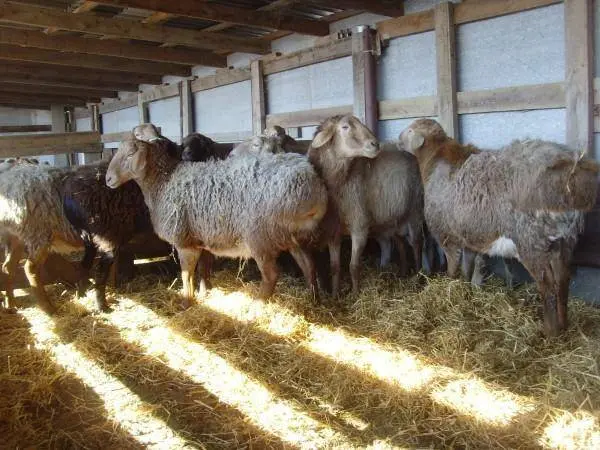
Usually, the so-called native breeds of animals are much inferior in their characteristics to those specially selected by professional livestock specialists in order to improve the given qualities. But the Hissar sheep turned out to be one of the few exceptions.
This breed is the largest in the world among meat and tallow sheep. The average weight of ewes is 80-90 kg. Individuals can weigh up to 150 kg. For a ram, the normal weight is just 150 kg, but the champions are able to walk up to 190 kg. And about a third of this weight is fat. Hissars are able to accumulate fat not only in the fat tail, but also under the skin and on the internal organs. As a result, the total weight of “fat tail” fat can reach up to 40 kg, although the average figures are much more modest: 25 kg.
Today, Hissar sheep are already bred throughout Central Asia, as the best breed among fat-tailed meat-fat. Like the “aboriginal” Akhal-Teke before, today the Hissar sheep is already considered a cultural breed and it is bred using scientific zootechnical methods.
One of the best Hissar flocks in Tajikistan today belongs to the former head of the Hissar sheep breeding farm, which was bred earlier at the Put Lenina breeding farm.
The Hissar breed of sheep is perfectly adapted to the difficult conditions of the mountains with their sharp changes in temperature and altitude. The Hissar sheep is able to travel considerable distances when moving from lower winter pastures to high mountain summer pastures.
Description of Hissar sheep
The sheep of the Hissar breed are tall animals with a graceful skeleton, a massive body and high legs and a very short tail, not exceeding 9 cm in length.
Hissar sheep breed standard
Usually this tail is hidden in the folds of the fat tail, causing skin irritation in the fat tail bag when the sheep moves.
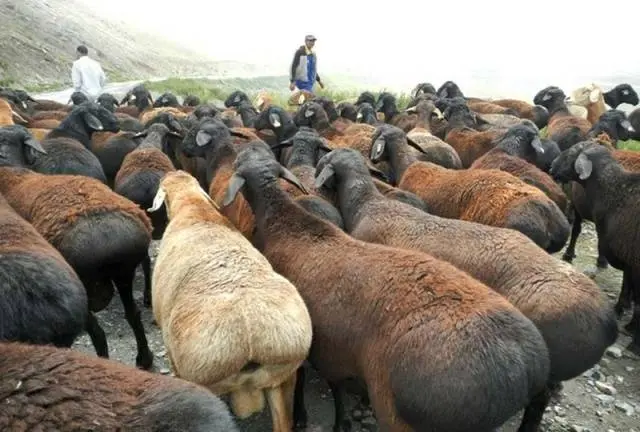
It would seem that the combination of an elegant frame and a massive body are incompatible concepts. But the Hissars could use the favorite phrase of overweight people as their justification: “I just have a wide bone.” The massiveness of the body of the Hissar is given not by the backbone, but by the accumulated fat. Such an “unnatural” combination of thin legs and fat accumulated under the skin is clearly visible in the photo below.
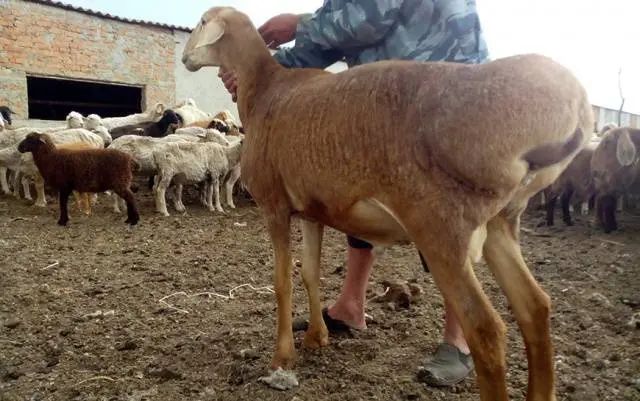
The growth of Hissar ewes is 80 cm at the withers. Sheep are 5 cm taller. The head is small compared to the body. It just doesn’t accumulate fat in the head. Horns are absent. The wool of the Hissars is of no particular value and is used by the local population of Central Asia simply “so that the good does not disappear.” There are many awns and dead hair in the wool of the Hissars, the fineness is of poor quality. Up to 2 kg of wool can be obtained from the Hissar per year, which the inhabitants of Central Asia use to make coarse, low-quality felt.
Hissars suit can be brown, black, red and white. Often the color depends on the breeding area, since in the mountains, due to the relief, literally in two neighboring valleys, there can be not only “their own” colors of cattle, but even individual breeds of animals appear.
The main direction of breeding Hissars is to obtain meat and fat. In this regard, there are three intrabreed types in the breed:
- meat;
- meat-greasy;
- sebaceous.
These three types can be easily distinguished even by eye.
Intrabreed types of Hissar sheep
The meat type is distinguished by a very small fat tail, which is hardly noticeable, and often completely absent. Among sheep breeders, this type of gissar is the most popular, from which you can get high-quality meat and not think about where to put the little-demanded fat tail fat.
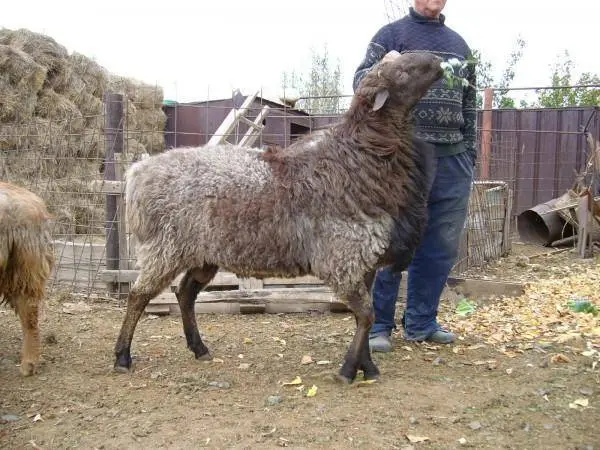
The meat-greasy type has a medium-sized fat tail, located high on the body of the sheep. The requirement for the fat tail is not to interfere with the movement of the animal.
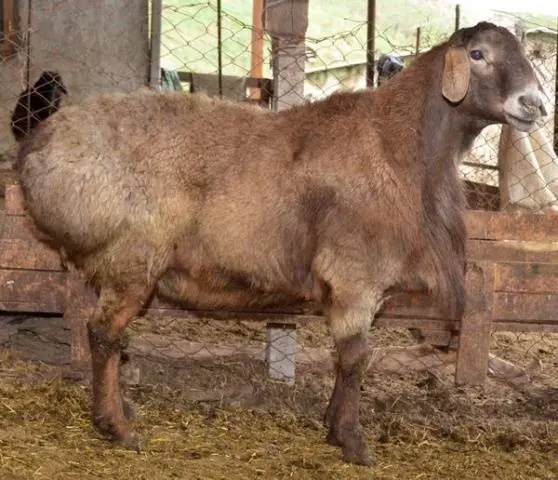
The greasy type has a highly developed fat tail, resembling a bag dangling behind a sheep. Such a fat tail can be almost a third of the body of a sheep. And both in terms of size and weight. From the greasy type of hissars, sometimes up to 62 kg of fat tail are obtained.
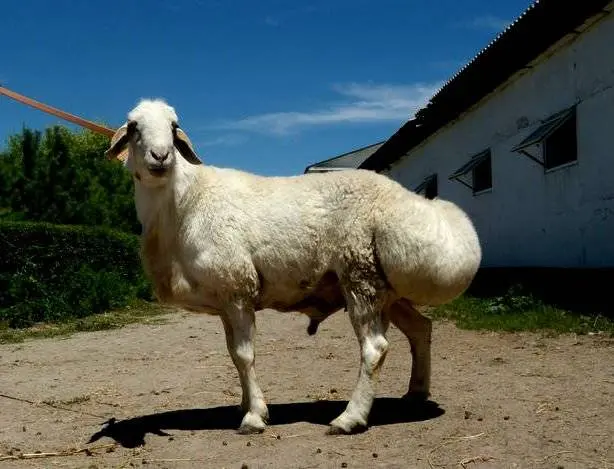
The characteristics of the Hissars in terms of getting lambs from them are not high. The fecundity of ewes is no more than 115%.
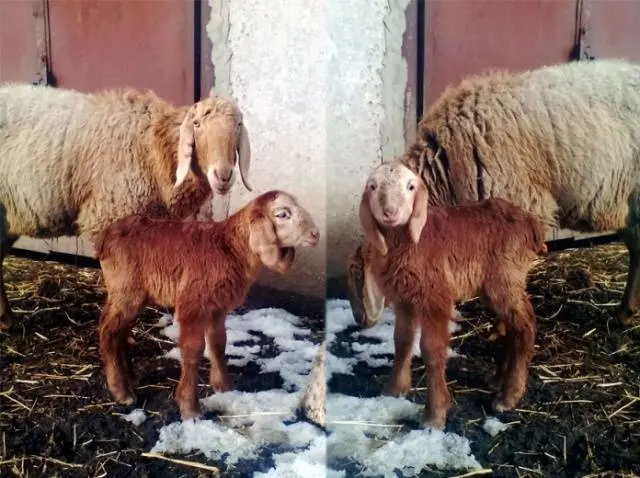
If the lambs are taken away from the ewes early, then from the sheep you can get 2,5 liters of milk per day for a month and a half.
Features of the content and the relationship of living conditions with the health of the Hissars
Hissars are a breed adapted to nomadic life. Making the transition to a new pasture, they are able to overcome up to 500 km. At the same time, their original homeland does not differ in excess moisture and the Hissars prefer a dry climate and hard, dry soil of high humidity and marshy meadows. If the Hissars are kept in dampness, their famous health begins to fail, and the sheep fall ill.
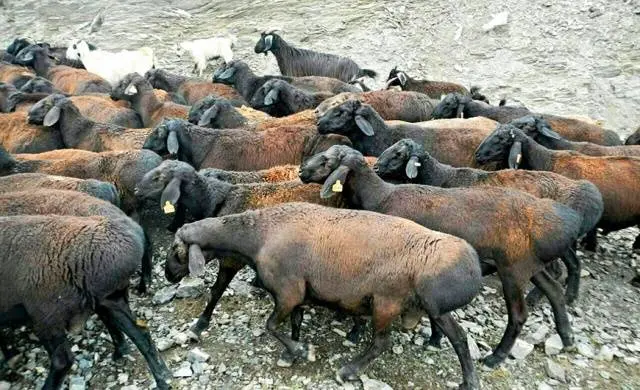
In the video above, the owner of the Hissars says that white hooves are undesirable as they are softer than black ones. It is not known where this superstition came from: from the equestrian world to the sheep world or vice versa. Or maybe it happened independently. But practice proves that with the correct maintenance of the animal, the white hoofed horn is no weaker than the black one.
The strength of the hoof horn does not depend on color, but on heredity, good blood supply to hoof tissues, a well-composed diet and proper maintenance. With a lack of movement, the blood circulates poorly in the limbs, not bringing the necessary amount of nutrients to the hooves. As a result, the hoof is weakened.
When kept in dampness and weakened immunity, hooves of any color begin to rot to the same extent.

To maintain the health of the mountain sheep, long walks, dry bedding and proper nutrition are necessary.
Features of the growth of Hissar lambs
Gissar is distinguished by high precocity. Lambs on large volumes of mother’s milk add 0,5 kg per day. In the harsh conditions of summer heat and winter cold, with constant transitions between pastures, lambs grow very quickly and are ready for slaughter as early as 3-4 months. 5-month-old lambs already weigh 50 kg. The maintenance of a flock of Hissars is inexpensive, since sheep are able to find food for themselves in almost any conditions. This is what determines the benefits of breeding Hissar sheep for meat.
Conclusion
In Our Country, the traditions of using fat tail fat are not very developed, and the Hissar breed of sheep would hardly find demand among indigenous s, but with an increase in the proportion of immigrants from Central Asia among the population, the demand for meat and lard rams is also growing. And today, sheep breeders are already keenly interested in sheep breeds that produce not so much wool as lard and meat. Among these breeds, the Hissar is in the first place.










is it possible to buy hissar sheep and ram in usa?